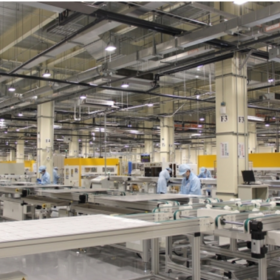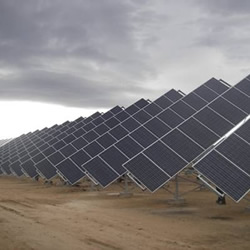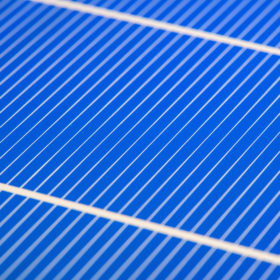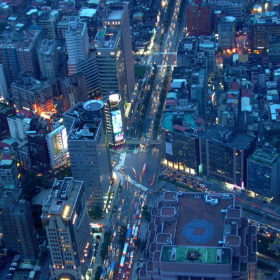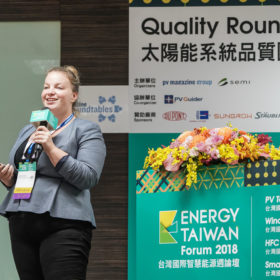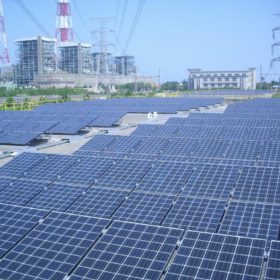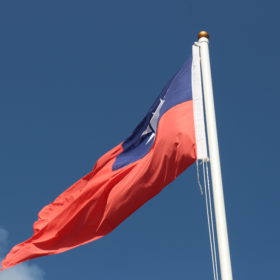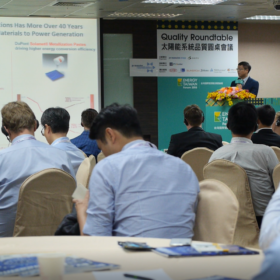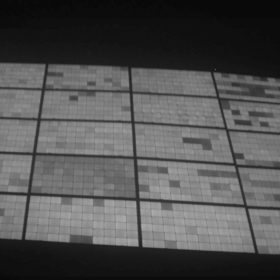Chinese market turbulence affects another slew of PV employees in Taiwan
TSEC is planning to cut a fifth of its workforce as it changes focus to produce higher-efficiency PERC cells, against a backdrop of more generic products swamping the market because of a slowdown in the world’s biggest market.
URE gets $90m financial backing from Taiwanese government
Taipei will invest in the company through its National Development Fund and government-run glass manufacturer Yao Hwa Glass Co. Ltd.
TOPCon: The next big thing after PERC
TOPCon technologies could further increase solar cell efficiencies, said Guangyao Jin, chief scientist, DuPont Photovoltaic Solutions, at this year’s Energy Taiwan, held in September. He added that metallization paste is crucial.
Taiwan on track to meet 20 GW goal, upstream turns downstream
EnergyTrend has released a report suggesting that Taiwan is on its track to meet the target of building 20 GW solar PV by 2025. While decreasing module prices makes it easier for investors and stakeholders to achieve this goal, Taiwan’s module manufacturers are struggling to compete with the price developments this year. Many companies in Taiwan will, therefore, turn their eyes to the downstream market, the report claims.
Video: Quality Roundtable Energy Taiwan 2018
LID mitigation in mono-PERC cells is technically feasible, according to Jay Lin and Karin Krauß, who spoke during pv magazine’s Quality Roundtable in Taiwan. The country’s rapidly growing floating PV market was also addressed.
Taiwan’s cell makers: A$44.8 bn loan, new layoffs and falling shares
In the latest news emerging from the struggling world of Taiwanese solar cell makers, Motech has announced more layoffs, and a NT$4.8 billion loan; GET has let 203 employees go; and shares of the new UREC merger are said to be down. India’s safeguard tariffs are also hitting the country’s manufacturers hard.
Taiwan takes India to WTO over safeguard tariffs
Taiwan has joined Malaysia in requesting consultations with India under the safeguard agreement of the World Trade Organization (WTO), following India’s decision to impose 25% safeguard duties on imports of solar cells, whether or not assembled in modules.
pv magazine Quality Roundtable, Taiwan: Carrier-induced solar cell degradation: Solved (sort of)
Solar cell manufacturers are always on an R&D race to improve efficiency. But even with their efforts, today you can still expect up to about a 3.5% loss from carrier- or light-induced degradation, industry insiders claimed last Thursday at pv magazine’s Quality Roundtable, held at Energy Taiwan 2018 in Taipei.
Hard times for Taiwan’s PV manufacturers
Taiwanese solar cell manufacturer, Motech has announced plans to reduce its workforce by 300 and further adjust production capacity, while Sino-American Silicon’s CEO has revealed the company may exit the wafer business.
Challenges and solutions for anti-LID treatment
In PERC modules, both light and elevated temperature induced degradation (LeTID) and light induced degradation (LID) must be mitigated. What makes this tricky, however, is that the mitigation process of the first, counteracts that of the second, says Karin Krauß, R&D project manager, Rehm Thermal Systems. At the pv magazine Roundtable in Taipei next week, she will discuss possible solutions with cell and module manufacturers, and EPCs.
